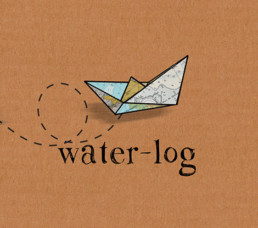We had always planned that our time in Gibraltar would be a time of prepping the boat for the big Atlantic crossing. Much though we would love to fill our days tripping merrily up to the rock to commune with the monkeys we have some serious work to be getting on with.
Work? What work you may ask. Didn’t we just spend an inordinate amount of time and money in Mylor Yacht Harbour on engineers, laminators, electricians and the like to insure that our boat was a lean, mean cruising machine? Yes – this is all true.
Dear readers, welcome to the wonderful world of liveaboard yachty maintenance. There are two types of boat people: the ones who are millionaires and buy brand new glittering yachts that they generally have no idea how to sail and even less of an idea how to mend. So, when things break, they get in ‘a man’ and get out their wallets. Surprisingly, James and I do not fall into this category. Our time in Mylor was one of rolling with the inevitable punches that each day would bring in terms of problems cropping up with the boat. However, this was to bring her up to scratch for getting off and, from this point onwards, all running repairs need to be dealt with by us. We have, somewhat grudgingly, had to have ‘a man’ to look at various things whilst we have been in Gib and concluded that we could have done the job ourselves without parting with the cash. And cash is important for every bit that we don’t spend allows us to keep going in this crazy scheme that bit longer.
So, what running repairs do we need to deal with? We haven’t even crossed an ocean yet, surely it can’t be anything that bad? Well, no, nothing too serious. But the list of foibles so far includes:
- leaking fuel tank.
- engine tacho (rev counter) broke before we had even left.
- general leaks (above the waterline! Only a problem in heavy rain), particularly the hatch in our cabin.
- wind generator, broke in the last big blow we were in so now doesn’t charge batteries. Wouldn’t matter too much except…
- battery charger, stopped charging!
- fridge stopped working (so nothing to drain the un-chargeable batteries then…)
- windlass (machine that feeds out anchor chain – for the uninitiated), chain jumps out of holder and occasionally the electrics fail.
What kind of a death trap boat is this??? Well, no, none of the items listed above are serious. But, in order to fix them James and I have begun our slow progression to become mechanic, engineer, electrician and general marine jack-of-all-trades.
A typical day for us in Gibraltar will include: pumping diesel out of the bilge in order to further dig at the mystery of the leaking fuel tank; tracing wires for the wind generator in and out of cupboards and panelling along the length of the boat; trekking to the other end of town to purchase something suitable to seal and re-bed the leaking hatch in our cabin; nipping over to the medical centre to get Hep A and Typhoid jabs for the Caribbean; kneading and baking a fresh batch of bread; monitoring the battery levels of our starter and domestics to check that our newly mended charger is behaving; trying to work out how the recently purchased voltmeter and hydrometer work; picking the brains of a boating neighbour who has lived aboard for the last 25 years; a route-planning session looking at prevailing winds in the Caribbean sea; another trek into town to get another chart; a long head-scratching conversation with a friendly mechanic who refuses to fix our wind generator but can impart his wisdom.
So no, no monkeys yet.

